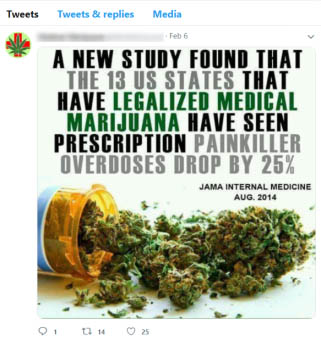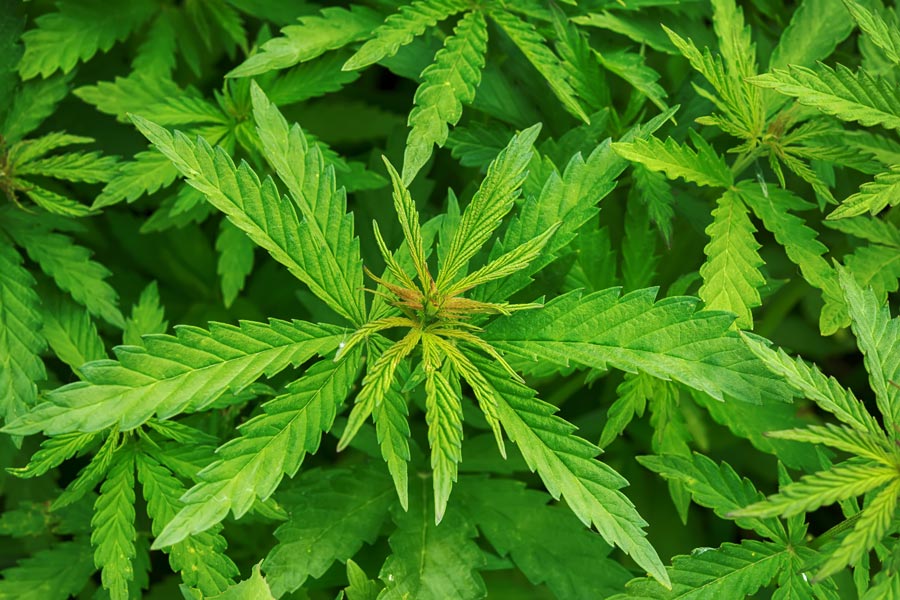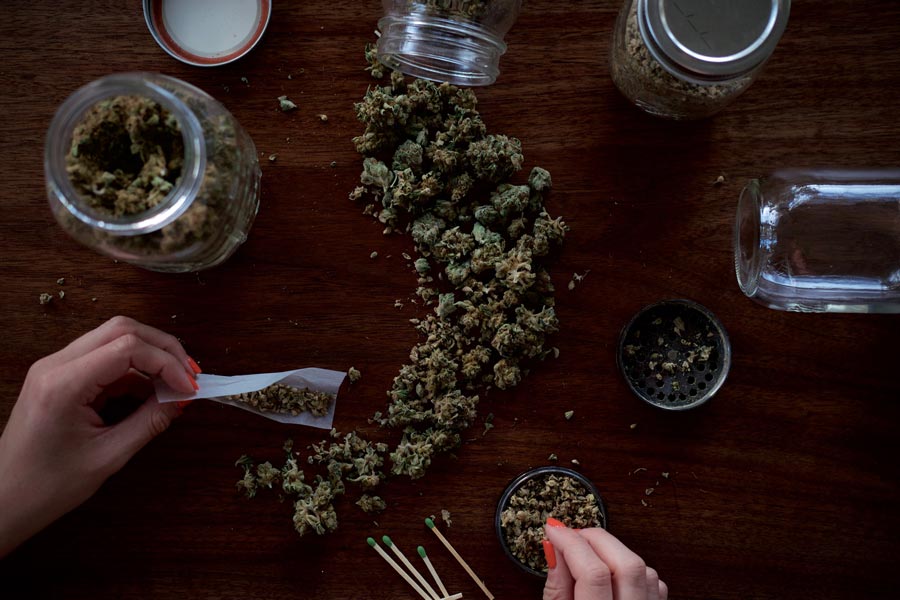Recreational and medicinal marijuana are gradually going mainstream. Much of the stigma around the plant has vanished. But as far as the Federal Government is concerned, marijuana is still an illegal drug. That means cannabis social media marketing is highly restricted.
So, can you promote your cannabis brand on social media? The simplest answer to this question is: Yes, but it depends on the platform, whether you’re using formal ads or organic content, and who will see that content.
WHAT’S OFF LIMITS?
In almost all cases, social media platforms won’t let you take out ads for medical or recreational cannabis. Some do allow you to take out ads for CBD oil and cannabis byproducts, however. Businesses that serve the cannabis industry, such as software companies or consultancies, are usually safe if they don’t depict the use of cannabis in their ads.
That said, social media companies are trying to clean up their image by adhering to national regulations. They’ve gotten a lot of negative attention lately. That means they’re cracking down even harder on ads they believe violate their policies.
Furthermore, local laws may prohibit certain types of cannabis business promotion.
For example, cannabis brands in Colorado can’t run any physical or digital ads unless there is “reliable evidence” that only 30% of their audience or less will be under 21. Despite the advanced targeting algorithms on social media platforms, there’s no way to know just who will see your ad.
In California, the audience limit is even more specific. There must be evidence that 71.6% of the audience must be over 21, or you can reasonably assume that only 28.4% of the audience will be under 21.
For this reason, platforms like social media behemoth Facebook have completely opted out of cannabis advertising. According to Facebook’s policy, ads “must not constitute, facilitate, or promote illegal products, services or activities,” nor can they “promote the sale or use of illegal, prescription, or recreational drugs.”

(Source: Facebook)
Essentially, any type of drug is a no-no when it comes to Facebook ads. Even if cannabis and cannabis products are legal in some states, social media platforms are global networks. They’re safer from prosecution if ad content on their services adheres to national laws.
Even if you think you followed all the rules, your ads could still be pulled. Even if you have no clear depictions of cannabis use in your ads, social media companies can pull your ads just because they want to.
If you search online, you may find articles explaining how to “get around” advertising restrictions by using content that implies cannabis but doesn’t depict it outright. You could try this, but it’s just not reliable. If you’re a data-driven company, you likely won’t see a substantial ROI by trying to skirt the rules, more info.
ORGANIC CANNABIS SOCIAL MEDIA MARKETING
The most important distinction to make regarding cannabis social media marketing is the difference between organic content and paid-for advertising content.
In the U.S., organic content (content you create yourself and post to your own pages) is generally protected as “free speech” under the First Amendment of the Constitution.
If you do a search for medical marijuana on Facebook, you’ll see plenty of content about medical cannabis:

(Source: Facebook)
Cannabis content that isn’t removed is typically featured as a news item or someone’s personal experience rather than promotional material. If your company produces helpful and informative content as part of your marketing strategy, you can likely find an audience on social media.
Cannabis companies like dispensaries can even build their own pages:

(Source: Facebook)
Keep in mind that no one has a “right” to be on social media. Social media companies have complete control over their networks. They have the ultimate say over what stays and what goes.
Furthermore, you can’t predict how people will react to your business. Your posts could be reported as “inappropriate” by users who don’t agree with the cannabis industry. This could put a damper on your social media marketing strategy.
https://www.readygreen.com/cbd-marketing
Regardless, cannabis social media marketing is still a viable option for most businesses, especially when it’s combined with other inbound marketing strategies. Here’s a breakdown of where each platform stands:
On Facebook, your best course of action is to build a business page and post organic content. Your page will contain all your business information to help people locate or get in touch with you. They can even rate your company and engage with you via your page.
If you can build up a substantial following on Facebook, you’ll be able to drive more traffic to your website by posting your own content. Be sure to read Facebook’s guidelines carefully before posting.
Like Facebook, Twitter won’t allow you to advertise cannabis products. However, Twitter seems to be perfectly fine with organic content relating to marijuana.

(Source: Twitter)
Much of the cannabis content on Twitter is news related. However, there’s no shortage of cannabis businesses posting on the platform. If you’re in the cannabis industry, build yourself a Twitter business profile and tweet away.
Businesses that serve the cannabis industry need to be on LinkedIn. You can’t market cannabis products on LinkedIn, but you can market to cannabis-related businesses. If you provide the cannabis industry with typical B2B services, you should have no problem advertising on the platform.
Pinterest doesn’t allow ads that promote illegal drugs. But unlike Facebook and Twitter, it does allow ads that feature cannabis byproducts, such as hemp, CBD products, and any other products that don’t contain THC.
In general, you shouldn’t have any trouble posting organic content about cannabis on Pinterest.
SNAPCHAT
Snapchat won’t allow ads that promote drug paraphernalia or drug use. It won’t allow organic content that promotes drug use, either. However, most other educational cannabis content should be okay to post on the network.
*Note: in 2016, about 23% of Snapchat’s users were under the age of 18 and 37% were between the ages of 18-24. Snapchat is a favorite platform of younger consumers. Since you can only market to adults, be smart about promoting cannabis products on Snapchat. If you’re a B2B business serving the cannabis industry, you may want to skip Snapchat altogether.
YOUTUBE
YouTube’s organic content restrictions aren’t as strict as other platforms. You should have no problem posting content about recreational marijuana, medical marijuana, or even growing marijuana, like in this news report:
(Source: YouTube)
However, YouTube does have restrictions when it comes to ads and promotional videos. You still can’t promote or feature “the sale, use, or abuse of illegal drugs, regulated drugs or substances, or other dangerous products.”
Once again, it’s all about how you frame your content. If it’s informative and helpful, it’s generally okay. If you’re advertising a cannabis product, you could get into trouble.
You can’t advertise the sale or use of recreational substances on Reddit. However, when it comes to organic content, Reddit is relatively unregulated. As long as your content is educational, you shouldn’t have a problem.
Try targeting specific subreddits that revolve around cannabis (there are plenty). Reddit thrives on conversation, so try to add value everywhere you can instead of pitching a product or service.
Google doesn’t seem to differentiate between medical and recreational cannabis — you can’t promote either using Google ads (including Google AdWords). Of course, if you have a website, you can still get listed in Google search results with a robust SEO strategy.
MASTER CANNABIS SOCIAL MEDIA MARKETING
Like other forms of marketing, Cannabis social media marketing can be a bit of a minefield. But if you use common sense and stick to inbound marketing principles, you shouldn’t have any trouble.
Keep your content helpful and informative whenever possible. On some platforms, your account could be suspended if you try to post “inappropriate” content too many times. Don’t hesitate to reach out to the support teams of these social media outlets if you need help — that’s what they’re there for.
If you need more help navigating the ins and outs of cannabis social media marketing, contact us at ReadyGreen.
Original Source: https://www.readygreen.com/seo/can-you-promote-your-cannabis-brand-on-social-media/






